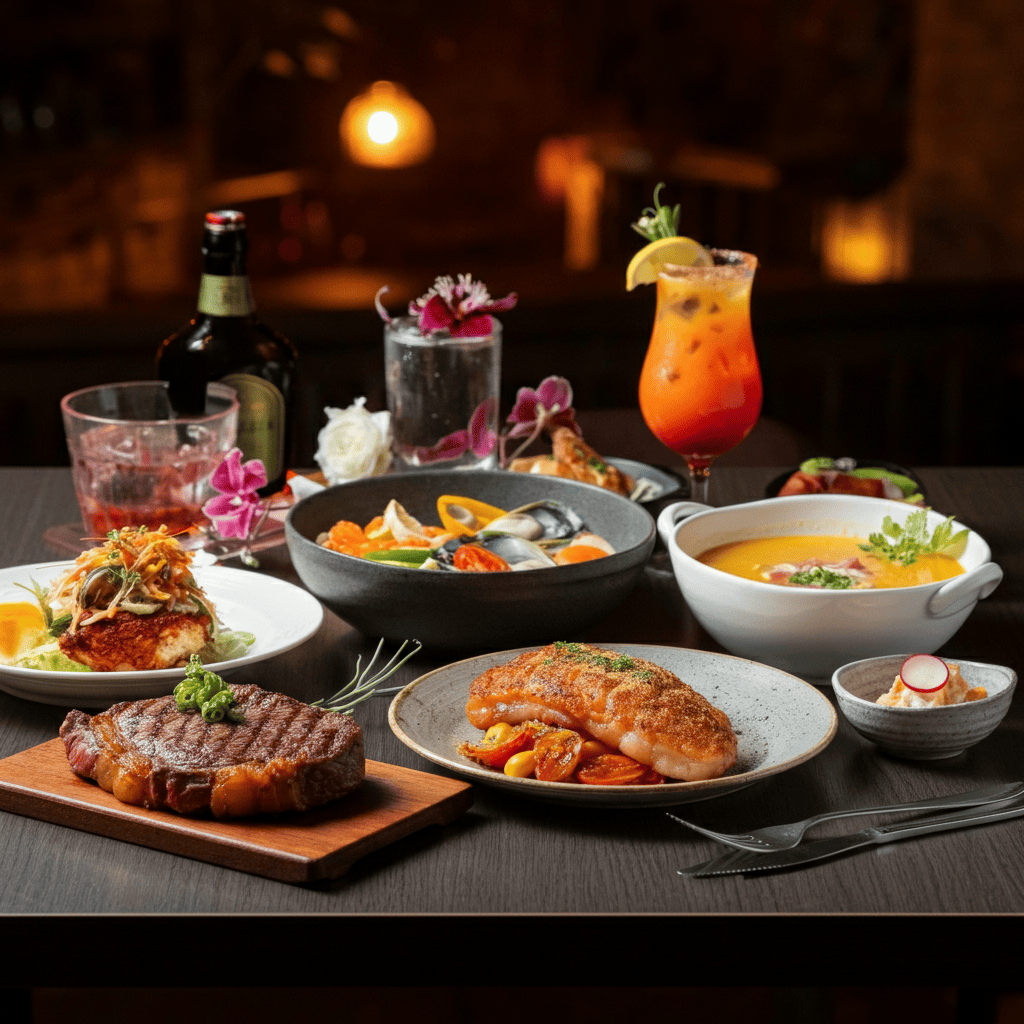Dining out should be a treat, whether you’re catching up with friends, celebrating a milestone, or simply taking a break from home cooking. But the truth is, not every menu item offers the same quality or freshness that you’d expect. Some dishes are better left unordered—for the sake of both your wallet and your stomach.
This post dives into some common restaurant pitfalls, explaining exactly what you should think twice about before ordering. By the end, you’ll know how to make smarter choices for a more enjoyable dining experience.

- Introduction: Setting the stage – dining out dilemmas.
- Risky Dishes:
- Buffets: Quantity over quality?
- “Fresh” Seafood: Questionable freshness.
- Soup of the Day: Potential for leftovers.
- Anything “Special”: Clearing out old inventory.
- Preparation Concerns:
- Well-Done Steak: Hiding lower quality cuts.
- Complicated Cocktails: High sugar, low quality alcohol.
- Salad Bar: Hygiene concerns.
- Conclusion: Smart dining strategies for a safer, more enjoyable experience.
Risky Dishes
Buffets: Quantity Over Quality?
There’s a certain appeal to buffets with their endless trays of food and variety for every palate. However, buffets can often sacrifice quality for quantity.
- Why it’s risky: Food can sit out for hours, often at unsafe temperatures, making it a breeding ground for bacteria.
- Pro tip: If you can’t resist a buffet, opt for items freshly cooked at a live station or dishes that haven’t been out too long.
“Fresh” Seafood: Questionable Freshness
Seafood can be a standout choice at restaurants, but it’s also one of the riskiest. If you’re in a landlocked area or dining at a non-specialty restaurant, “fresh” might not mean what you think.
- Why it’s risky: Long transportation times can affect the quality, and improper storage may lead to foodborne illnesses. Signs of questionable freshness include overly fishy smells or slimy textures.
- Pro tip: Stick to seafood if you’re dining near the coast or at an establishment known for its seafood dishes.
Soup of the Day: Potential for Leftovers
The “soup of the day” sounds inviting, but there’s an insider joke among some chefs that these soups are a convenient way to repurpose unsold ingredients from previous days.
- Why it’s risky: Flavors may not align, and freshness is sometimes questionable.
- Pro tip: Ask your server about the soup’s ingredients and preparation before ordering.
Anything “Special”: Clearing Out Old Inventory
Many chefs use specials to showcase their creativity, but some less scrupulous establishments use them to clear out food nearing its expiration date.
- Why it’s risky: Old or excess ingredients might not meet their prime.
- Pro tip: Specials at fine dining restaurants are often a safe bet. However, in casual spots, be cautious if the description sounds overly vague.
Preparation Concerns
Well-Done Steak: Hiding Lower Quality Cuts
Ordering a well-done steak might seem like a matter of preference, but it can sometimes mask lower-quality cuts of beef. Tenderness and flavor may take a backseat once meat is cooked to this level.
- Why it’s risky: Overcooking can dry out the steak and make it less flavorful, while tougher or lesser cuts may be used.
- Pro tip: If you’re not keen on rare steaks, go for medium or medium-well to hold onto more of the steak’s natural quality.
Complicated Cocktails: High Sugar, Low Quality Alcohol
Ever wonder why that beautifully styled cocktail didn’t taste quite as good as it looked? Drinks with long ingredient lists often mask the use of low-quality alcohol with an overload of sugar.
- Why it’s risky: Excessive sweeteners can overwhelm flavors, and it’s harder to identify subpar alcohol.
- Pro tip: Order classic cocktails with fewer ingredients, like an Old Fashioned or a Gin & Tonic, to better enjoy the quality of spirits.
Salad Bar: Hygiene Concerns
Salad bars are another seemingly healthy option that might be hiding a few hygiene issues. Improper refrigeration or repeated handling from other patrons can make them less clean than they appear.
- Why it’s risky: Fresh veggies require careful storage, and communal salad bars can raise the risk of cross-contamination.
- Pro tip: If the salad bar doesn’t look pristine or lacks sneeze guards, it’s probably best to pass. Opt for salads prepared directly in the kitchen instead.
Smarter Dining Strategies for Better Experiences
Dining out becomes infinitely better when you’re in the know about what to avoid and how to pick the best dishes off a menu. Here’s how to be a savvy diner every time you eat out:
- Ask Questions: Don’t hesitate to ask your server about the freshness of ingredients or preparation methods.
- Look for Clues: Pay attention to how items are described. Terms like “catch of the day” or “market fresh” aren’t always guarantees, so do a little detective work.
- Stick to What They’re Known For: Order what the restaurant specializes in! If you’re at a steakhouse, skip the sushi, and vice versa.
- Trust Your Instincts: If something looks or smells off, it probably is. Trust your gut before digging in.
By avoiding risky dishes and honing in on quality options, you can make the most of every dining experience. And remember, dining out should be an adventure in flavor and enjoyment—not disappointment.
